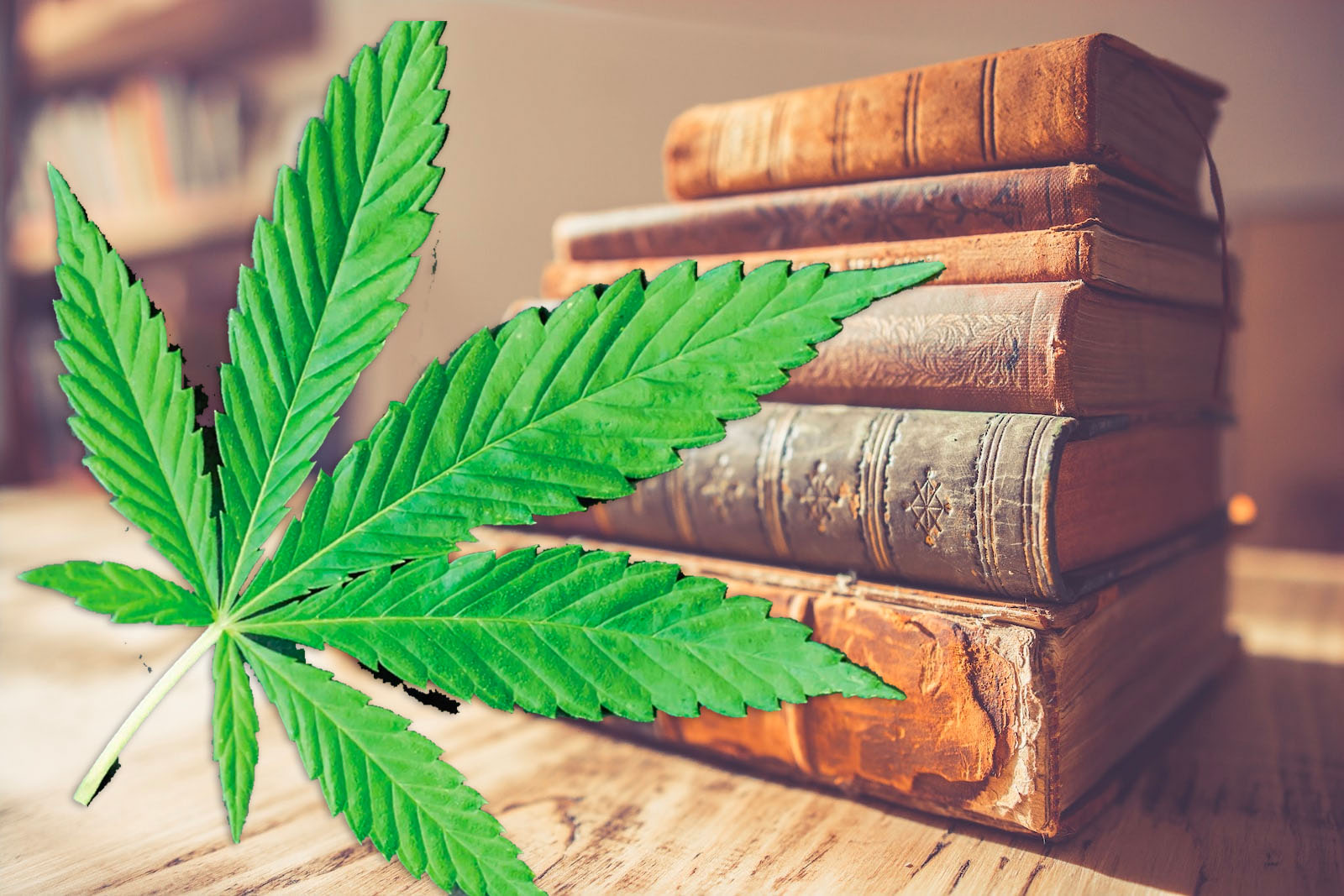Table of Contents :
Orginate from Central Asia
No one knows for sure where the cannabis plant originally came from, but it is believed to come from the Central Asian steppe, near the Altai or Tian Shian mountains for around 3-4000 BC.
Some believe that the use of hemp originated much earlier. Wikipedia writes that hemp may have been cultivated in Japan as early as 8000 BC. for its fibers and as a food source and perhaps as a psychoactive substance. A claim that is based on an archaeological find on Oki-eyene, where they found cannabis pine from approx. 8000 BC.
India and China are believed to be the first two nations to start cultivating the cannabis plant in big scale. Hemp fabric was widely used in ancient China to make clothing and rope, but it later also get used to make paper and sails. The seeds were used as food.
Siberian burial mounds have traces of burnt cannabis seeds dating to 3000 B.C. In Hindu texts, Shiva, the supreme deity of many sects, is given the title “The Lord of Bhang“, because the cannabis plant was his favorite food.
After originating in Central Asia, the plant spread to Africa, Europe and finally the Americas.
More than 5000 year history of medical use
Most ancient cultures did not grow the plant to get high, but as herbal medicine. The medicinal properties of the cannabis plant have been known for millennia. As far back as 2800 BC cannabis was used to treat a wide range of health problems and was listed in the pharmacopoeia of Emperor Shen Nung (the father of Chinese medicine), writes the University of Sydney on its pages.
The health effects of cannabis are also discussed in the texts of Indian Hindus, Assyrians, Greeks and Romans. These texts reported that cannabis treated a wide variety of health problems, including arthritis, depression, amenorrhea, inflammation, pain, lack of appetite, and asthma.
Middle east
Cannabis was first introduced to Iraq around 1200 C.E. by Persian travelers. Hashish was introduced to Egypt by “mysterious Islamic travelers” from Syria during the Ayyubid dynasty in the 12th century AD. By the end of the 13th century, hashish consumption has become quite popular in the Muslim World.
First when tobacco come to the region around the beginning of the 16th century it get popular to smoke cannabis. Before this time hash was typically consumed orally in a mixture of nuts and honey.
While the Koran explicitly forbids alcohol, some Muslim interpretations of the Koran permit the use of hashish. For that reason, hashish is easier to obtain than alcohol in some regions of the Middle East.
Europe
Cannabis came to Europe and Australia when the British began colonizing the world. They quickly built up a large hemp industry in their colonies which generated large revenues for the king.
Although cannabis had been in Europe for a long time, hashish did not become popular in Europe until the 19th century when Napoleon’s troops marched through Egypt and found that hashish, rather than alcohol, was the regional intoxicant.
America
Cannabis was introduced to America by the Spaniards in 1530–45. The early colonists grew hemp for textiles, rope, paper and food. The US Constitution, for example, is written on hemp paper. Because it’s a fast-growing plant that’s easy to cultivate and has many uses, hemp was widely grown throughout colonial America. In the early 1600s, the Virginia, Massachusetts and Connecticut colonies required farmers to grow hemp.
These early hemp plants had very low levels of tetrahydrocannabinol (THC), the chemical responsible for marijuana’s mind-altering effects. There’s some evidence that ancient cultures knew about the psychoactive properties of the cannabis plant. They may have cultivated some varieties to produce higher levels of THC for use in religious ceremonies or healing practice.
Medical use of cannabis
In the 1830s, Sir William Brooke O’Shaughnessy, an Irish physician who had studied in India, found that the therapeutic use of cannabis extracts could help reduce stomach pain and vomiting in people suffering from cholera. He documented this in his book which was published in 1841.
På slutten av 1800-tallet ble cannabisekstrakter solgt på apotek og legekontorer over hele Europa og USA for å behandle mageproblemer og andre plager.
Ban of marihuana
Several Islamic countries banned cannabis at the end of the 19th century. Egypt banned the import of cannabis in 1879, while Morocco introduced strict rules relating to cannabis cultivation and trade in 1890. Greece banned hashish in 1890.
At the end of the 19th century and beginning of the 20th century, several European countries continued to ban cannabis, and several British colonies introduced bans on cannabis. Mauritius was first out in 1840, before Singapore (1870), Jamaica (1913) and South Africa (1922) came after. Great Britain and New Zealand followed later in the 1920s.
In America, politics and racial issues caused cannabis to be banned in the early 20th century. In 1906, the first restrictions on the sale of cannabis in the United States came in the District of Columbia. Canada followed up in 1923 with its “The Opium and Narcotic Drug Act” – before anyone had reported the use of the drug in Canada.
At an international conference in The Hague, the International Opium Convention, which prohibited the export of “Indian hemp” to countries that had banned the use of cannabis, was adopted in 1925.
Before a flood of Mexican immigrants came to the United States as a result of the Mexican Revolution in the early 1900s, marijuana had not been used for recreational purposes in the United States.
Massive unemployment and social unrest during the Great Depression fueled resentment among Mexican immigrants and public fear of the “evil weed”. As a result, 29 states had banned cannabis by 1931.
In 1937, the Marihuana Tax Act was passed in the United States. A law that effectively removed the existence of recreational use of cannabis. The law imposed an excise tax on the sale, possession and transfer of all hemp products, and criminalized everything except industrial use of the plant (hemp).
During World War II, industrial hemp was still grown in the United States. When the Philippines was taken by Japan, the government forced the farmers to grow hemp to maintain the country’s need for hemp fiber. The last US hemp fields were planted in 1957 in Wisconsin.
In 19770, the United States introduced the Controlled Substances Act. A law which stated that cannabis had “no accepted medical use and a high potential for abuse”. Marijuana was listed here as a narcotic drug along with heroin, LSD and ecstasy. Marijuana was seen here as a “gateway” drug which meant that users started with stronger drugs later. After this, cannabis was classified as an illegal narcotic drug worldwide.
The criminalization of cannabis throughout much of the 20th century has meant that there has been little research into the effects of cannabis. In particular, it has been difficult to conduct cannabis research after the Controlled Substances Act came into being in 1970.
Liberalization and legalization
In 1972, the Dutch government divided drugs into more and less dangerous categories, with cannabis being placed in the less dangerous category. 30 grams or less was therefore made a misdemeanor and possession of up to 5 grams for personal use was decriminalized. Since 1976, cannabis for recreational use has been available in Amsterdam at small local coffee shops.
In 1996, California became the first US state to legalize medical cannabis in violation of federal law by enacting the Compassionate Use Act. In 2001, Canada became the first country to adopt a system regulating the medical use of cannabis.
In 2001, Portugal decriminalized all drugs. Prohibitions on production and sale were maintained, but they changed personal possession and use from a criminal offense to an administrative offense. Subsequently, a number of European and Latin American countries decriminalized cannabis, such as Belgium (2003), Chile (2005), Brazil (2006), and the Czech Republic (2010).
In Uruguay, President Jose Mujica signed legislation to legalize recreational cannabis in December 2013, making Uruguay the first country in modern times to legalize cannabis. In August 2014, Uruguay legalized the cultivation of up to six plants at home, as well as the creation of state-controlled outlets for marijuana.
In Canada, cannabis was legalized in 2018, while Thailand in 2022 is the first country in Asia to remove cannabis from the list of illegal substances. In the United States, 31 states and the US territories of Guam and Puerto Rico allow the medical use of cannabis. More and more states also allow recreational use today.






